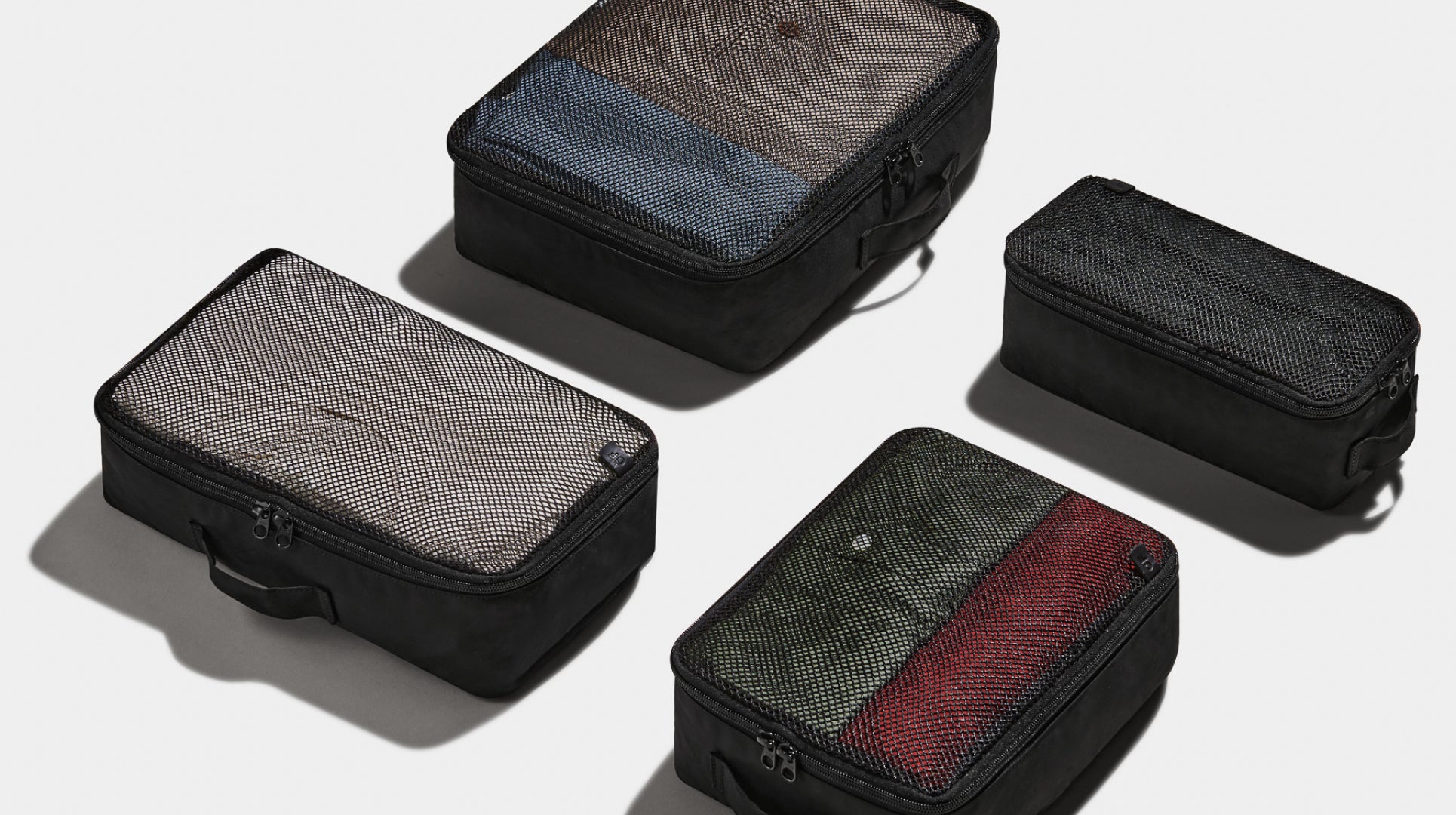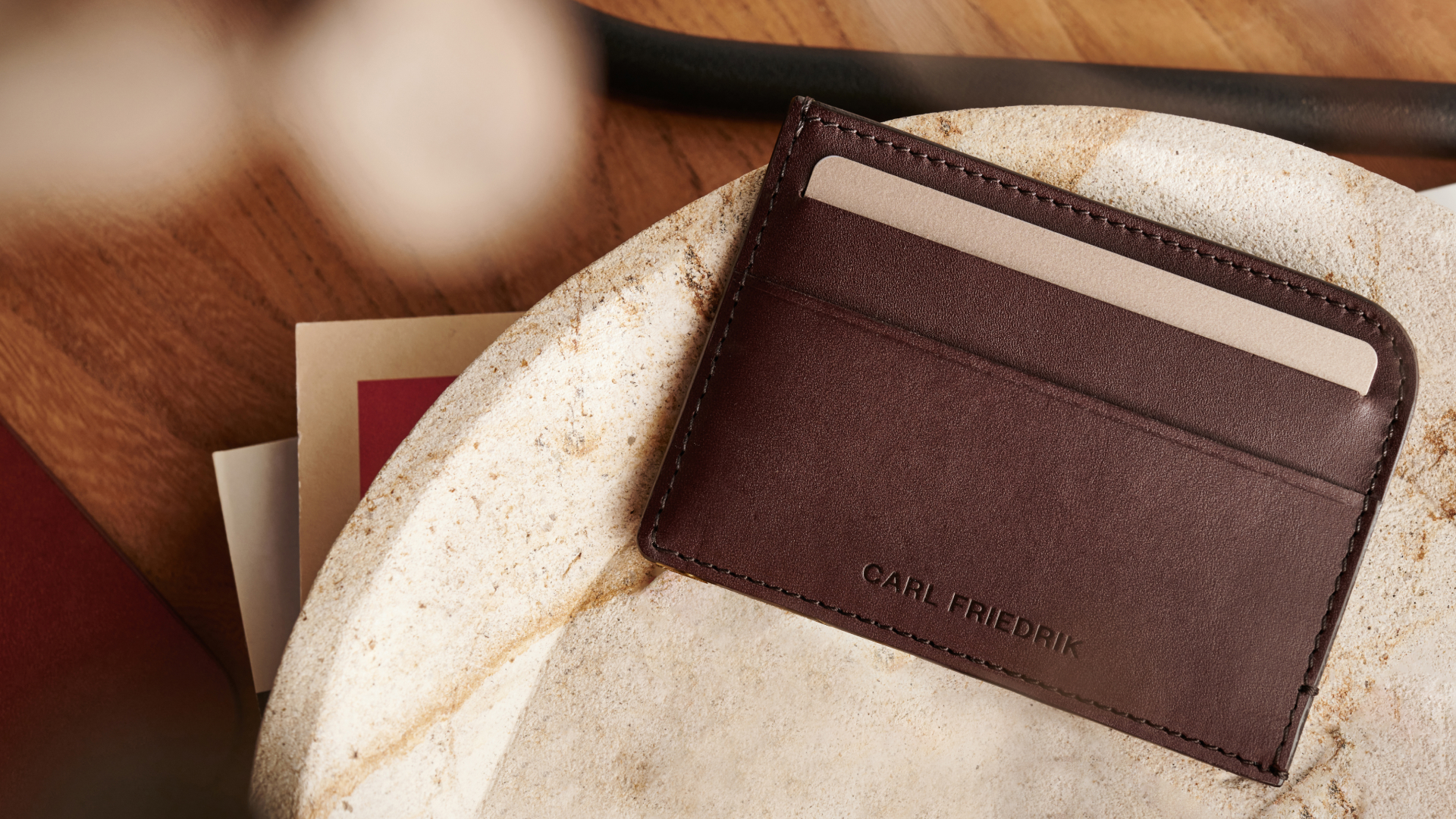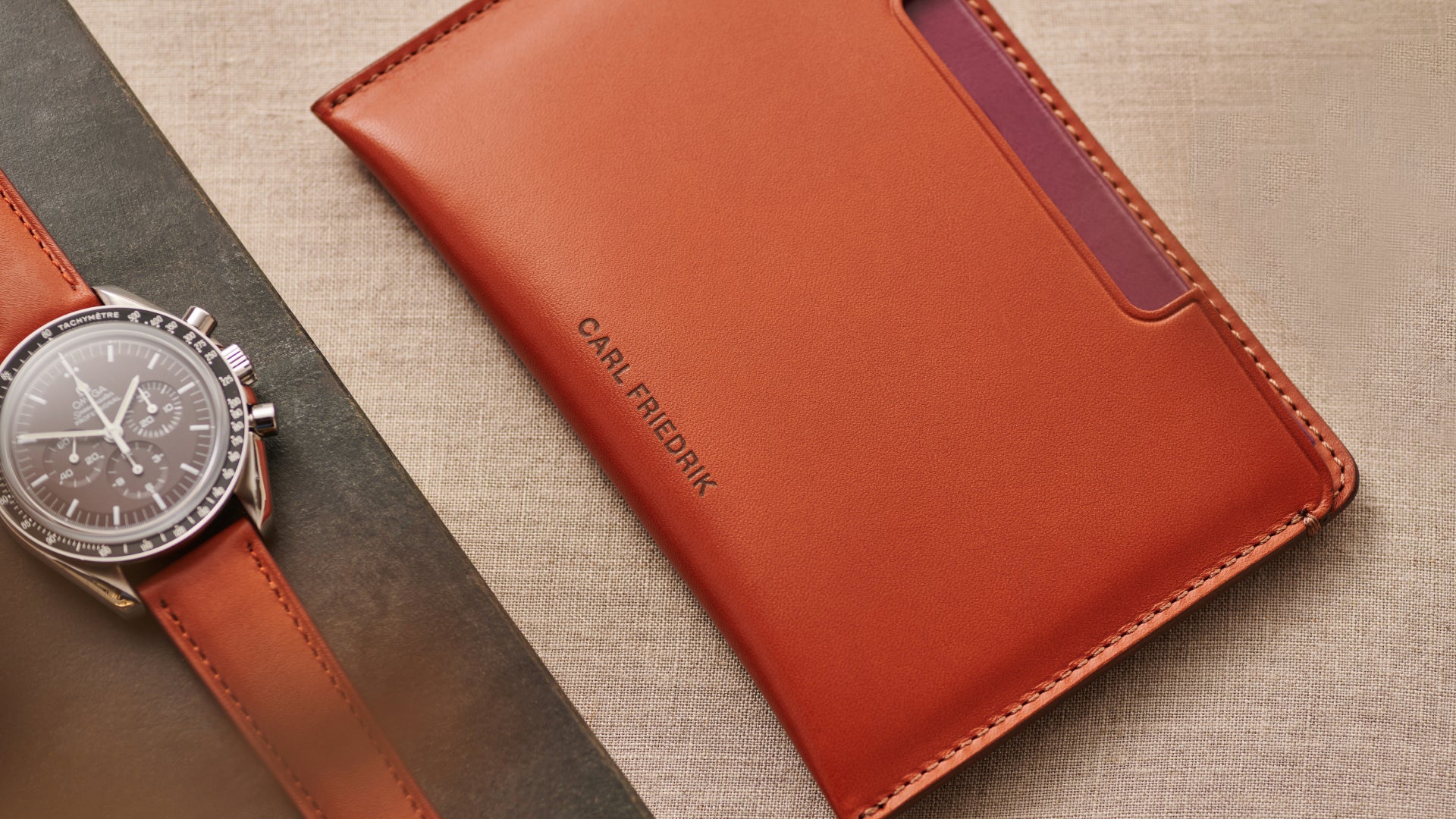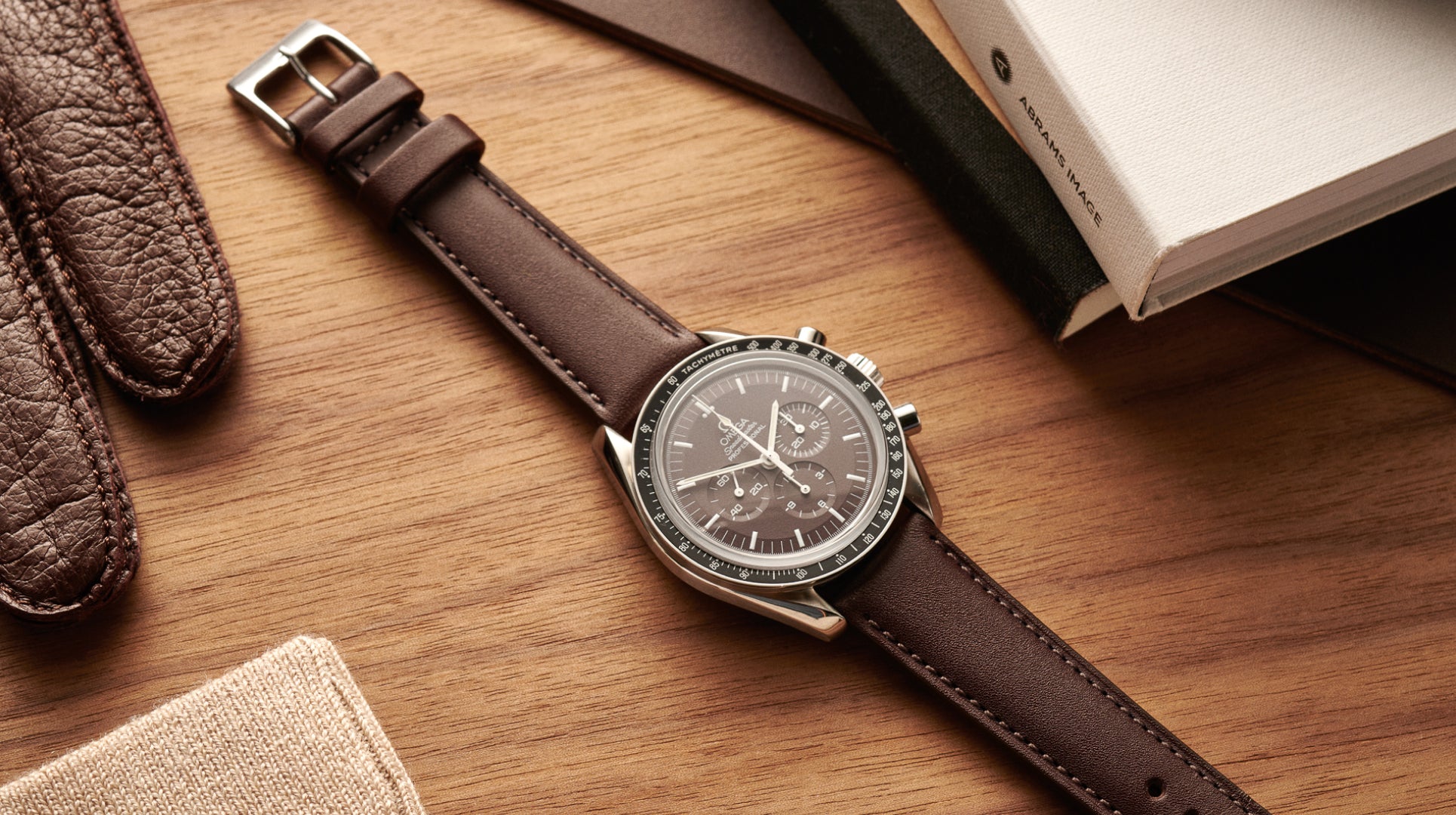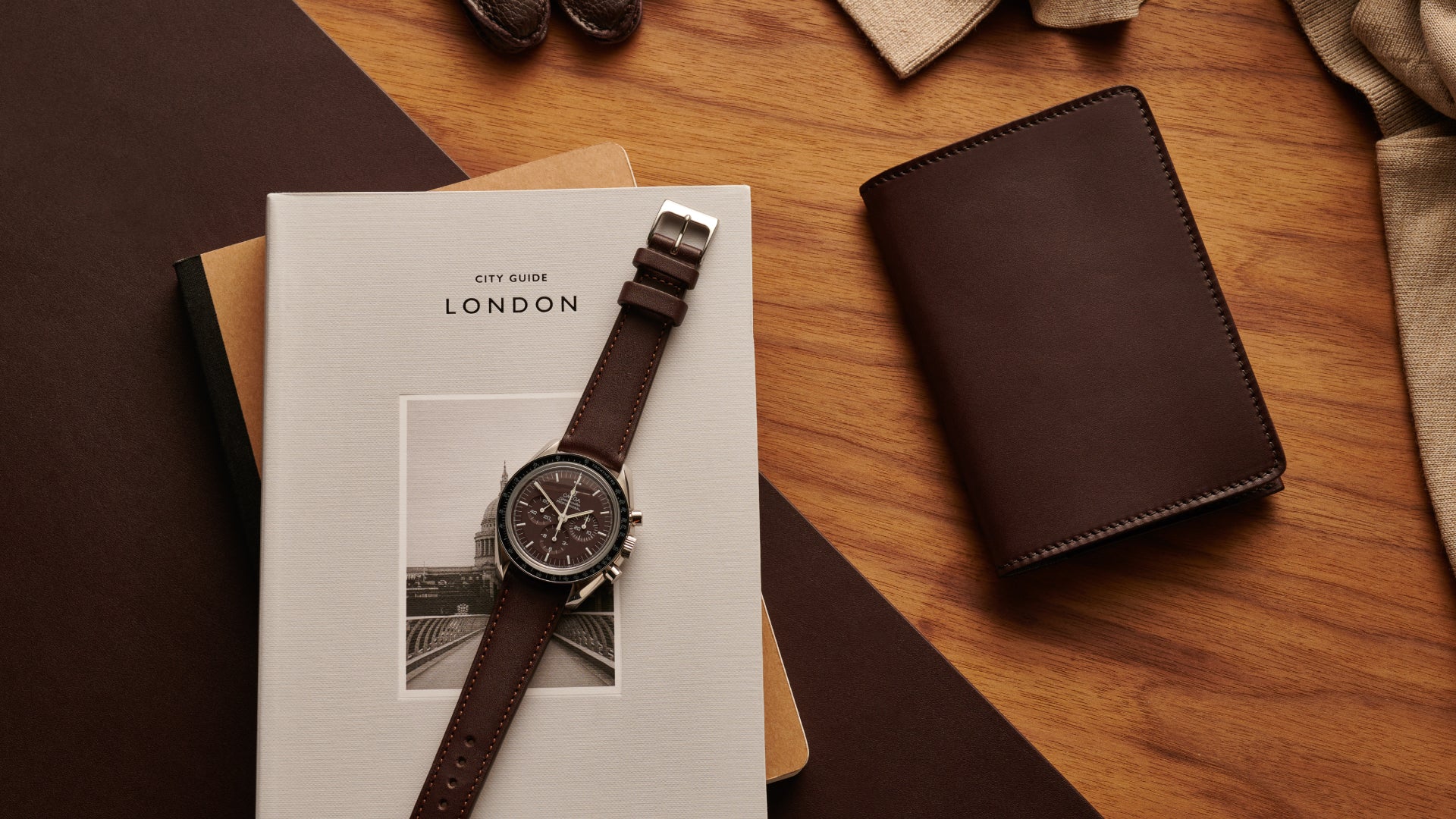Vegetable tanned leather is championed by leather connoisseurs, skilled artisans and, well, us (we incorporate it into all of our products).
It’s a multifaceted topic that we love to discuss, one that certainly warrants your attention. So we’ve decided to take a deep-dive into the world of vegetable leather — touching on anything from the vegetable tanning process, to the pivotal question of sustainability in the leather industry.
We’ll start with the basics:
What is vegetable tanned leather?
The process through which animal hides are turned into leather is referred to as tanning. Vegetable tanning is one of the main leather production methods in use today: approximately 10% of all leather is vegetable tanned.
This technique involves using natural vegetable tannins to alter the protein structure of the hide, causing it to become leather. In essence, these organic substances serve three functions: preserving, strengthening and giving colour to the hide.
If you’re a wine aficionado, you’ll know that the distinct taste of every bottle of vino is influenced by tannins located within the grapes. Tannins are also commonly found (in varying concentrations) in other fruits, plant species and seeds, where they are discernible due to their sharp taste. But when it comes to vegetable tanning, tree bark, leaves and roots are often favoured due to their exceptionally high tannin concentration. A list of tree species commonly used to make veg tan leather includes:
- Birch
- Catechu
- Chestnut
- Mimosa
- Oak
- Willow
A brief history of veg tan leather
The story of vegetable tanned leather is intricately tied up with the wider history of human development. One of four prehistoric tanning techniques, our ancestors first utilised the process some 5,000 years ago in Sumer (modern-day Iraq and Kuwait), where hides were soaked in water filled with Mimosa bark and leaves. The resulting leather was then used to create primitive types of clothes, which kept them warm and provided camouflage for hunting, as well as bags for transporting their possessions.
Later civilisations, like the Ancient Egyptians and Babylonians, continued to make advancements in vegetable tanning, but it was the Romans who first regulated the industry. This allowed Tuscan craftsmen to perfect the art of making leather sandals. To this day, the region retains its rich socio-cultural history, and is still regarded as the leather heartland of Italy. Certainly, contemporary artisans who continue to practice vegetable tanning are leveraging thousands of years of human experience.
Vegetable tanning process
Steps of the vegetable tanning process
- Curing: the hides are salted to prevent bacteria from growing.
- Liming: to remove hair and fat residues, the hides are soaked in milk of lime.
- De-liming: to lower the hides' pH level, they are soaked in another chemical solution.
- Tanning: over the course of 30-60 days, the hides are regularly moved into different drums filled with tanning solutions of varying concentrations.
- Drying: the hides are removed from the drums and dried over a few days.
- Treatment: the leather is oiled, stretched, trimmed and measured. Depending on how the leather is to be used, other finishing treatments can also be applied.
Pre-tanning
The hides used in leather production are often (and always for Carl Friedrik) a by-product of the meat industry. Once they arrive at a tannery, they must immediately be cured with salt to prevent bacterial growth developing. The next step is to remove wool, hair and fat residues. This is achieved through ‘liming’, which involves soaking the hides in large rotating drums filled with natural chemicals like milk of lime (Calcium Hydroxide).
Before tanning can begin, the pH of the hides must be lowered again. The rehydration phase — sometimes referred to as ‘de-liming’ — sees them returned to the drums, where they are treated with another chemical solution.
Tanning
Now that the hides have been prepped, they are placed into drums filled with tanning agents and water. The exact combination of tannins in the solution varies from tannery-to-tannery, with secrets closely guarded and passed down through generations. A master tanner will carefully manipulate the tannin blend depending on the type of leather he aims to produce, bearing in mind considerations like colour, strength and feel.
Over a period of around a month, the hides are regularly rotated to drums with slightly higher concentrations of tantric acid. As they absorb evermore vegetable tanning agents, the hides begin to take on new physical properties.
Treatment
After tanning is complete, the damp hides are removed and allowed to dry out. Because all natural fat has been lost, it’s necessary to lubricate the leather with a blend of conditioning oils and waxes. This enhances colour concentration and improves overall durability, reducing the likelihood that the leather will crack in the future.
Once oiled, the leather is stretched, trimmed and measured. Depending on the desired finish, it can then be subtly refined further.
Benefits of vegetable tanned leather
There are numerous reasons why vegetable tanned leather is regarded as the benchmark in the leather industry. Let’s start by looking at the favourable physical characteristics it possesses. Veg tan leather, in particular, is renowned for its robustness and strength — if appropriately cared for, it could last longer than a lifetime.
Aside from durability, the vegetable tanning process also gives leather a distinct, somewhat sweet aroma — the kind you probably already associate with leather. And the absorption of tannins makes for colours that are notably rich and deep in character; think natural and earthy tones, like beige and brown.
Because vegetable tanning requires no synthetic coatings, the leather is allowed to ‘breathe’. As a result, it’s able to absorb moisture and oils, and go on to form a ‘patina’. In the world of leather, patina is an indicator of quality and aesthetic beauty, something that enhances the perceived value of a leather product.
Part of the joy in owning say, a vegetable tanned leather wallet or weekend bag, is also the sense of prestige that it evokes. Knowing that the leather has been painstakingly produced by expert artisans — who rely heavily on centuries-old techniques — is something to celebrate.
Lastly, vegetable tanning is the most environmentally-friendly method of leather production. More on this later, but it’s worth reiterating that only natural and organic substances are used during the production process.
Disadvantages of vegetable tanned leather
While the pros far outweigh the cons in our mind, there are a few drawbacks that you should be aware of. One is that vegetable tanned products are, as a rule of thumb, more expensive. However, it is important to factor in other considerations, such as the superior quality, longevity and aesthetic of vegetable tanned leather. The old saying: ‘You get what you pay for’ rings particularly true here.
Part of the reason why veg tan leather carries a higher price tag is that it takes longer to produce than other types of leather (up to two months). For context, chrome tanning — the modern method used to produce 90% of leather — can be achieved in as little as one day.
In terms of physical attributes, vegetable leather can initially feel stiff, although will gradually soften in texture over time. And because it’s not treated with synthetic chemicals, other variations of leather often have a greater level of water resistance.
Vegetable leather is also less suitable for products that require thin or stretchy materials. This includes clothing and car seat upholstery (where the leather needs to be stretched over the seat).
Vegetable tanning vs chrome tanning
As previously mentioned, the vast majority of leather is now chrome-tanned leather. The method itself was invented in 1858 to keep up with rising leather demand at the backend of the Industrial Revolution. Instead of natural vegetable tannins, a solution of chemicals — predominantly the acid, chromium sulphate — is used to tan the hide. The basic principle is the same (modifying the hide’s protein structure), but the process is considerably quicker and cheaper, relying more on automated machinery than manual labour.
Chrome tanned leather has its own unique set of properties. Firstly, because it can be dyed with chemical agents, chrome leather is available in a wider variety of colours than vegetable tanned leather. Thinner and softer in texture, it’s generally more resistant to heat and water — although also prone to cracking and unlikely to have the longevity of vegetable leather. Importantly, because chrome leather is not as porous as its organically produced counterpart, it will struggle to display a patina over time. And if you’re after seeking that quintessential leather smell, you will be disappointed (expect a chemically-infused scent, or very little smell at all).
One downside to vegetable tanning is that it uses a lot of water; depending on where the tannery is located, this can have a marginal or sizeable impact. Many tanneries are located by streams or rivers for this reason.
Chrome tanning, however, poses a genuine risk to eco-sustainability, particularly in developing nations with limited industrial regulation. The main threat stems from the dumping of chemical by-products — often chromium and lead — that can toxify rivers with carcinogens, kill local wildlife and render agricultural land unsuitable for farming. That said, newer methods are starting to gain traction. ‘Chrome free leather’, although still chemically tanned, makes use of chemicals that are far less harmful to the environment.
Comparing chrome vs vegetable tanned leather qualities
| Vegetable tanned leather | Chrome tanned leather | |
|
Length of production |
30-60 days |
1 day |
|
Environmental impact |
Less |
More |
|
Tanning agent |
Vegetable tannins (predominantly from bark extracts) |
Chemicals and salts (often chromium sulphate) |
|
Physical appearance |
Rich and deep colours, patina development |
Greater variety of colours available, unlike to develop patina |
|
Properties |
Long lasting, thicker, stiffer |
Water-resistant, thinner and stretchier, softer |
|
Smell |
Authentic, earthy aroma |
Often no discernible aroma |
|
Cost |
Generally more expensive |
Generally less expensive |
|
Best suited for |
Wallets, bags, saddlery and harnesses, belts (including industrial belts) |
Upholstery, furniture, clothing, gloves shoes |
Conclusion
It’s not hard to see the allure of vegetable tanned leather, from the desirable physical and structural characteristics, to the fact that it’s a five-millenia old technique still practiced today.
Hopefully we’ve converted you into fans — and given you a thing or two to consider next time you purchase a leather good.



